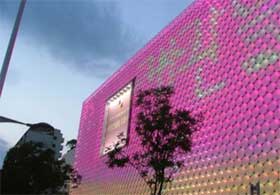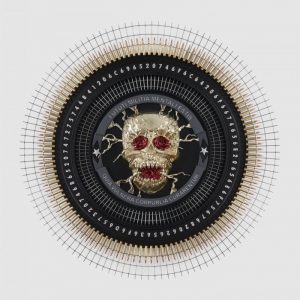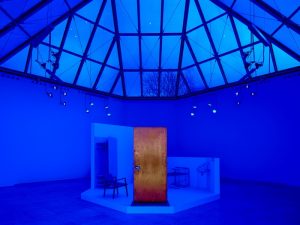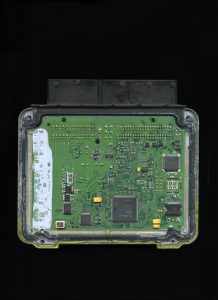To update the Galleria Mall in Seoul, Dutch firm UN Studio and theatre lighting specialist Rogier van der Heide (working for ARUP) mounted individual LEDs behind 4,340 frosted glass disks, turning a 1970s concrete structure into an ever-changing, light-reactive and computer-programmable facade that behaves like a giant video screen.

Shimmering by day and radiant at night, the disks are frosted on both sides to diminish sun glare and diffuse light produced by LED fixtures behind each disk, capable of generating 16 million colors. Because each LED is individually controlled, together the disks act like pixels on a huge screen, displaying text, scenes, and color schemes changed via the Internet, up to 20 times per second.
Via MetropolisMag.
Archinect has an image gallery.







